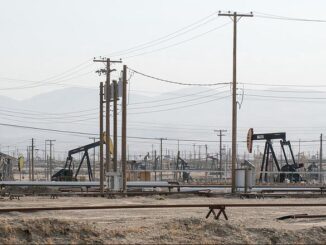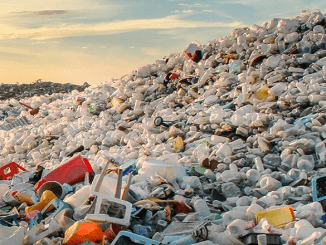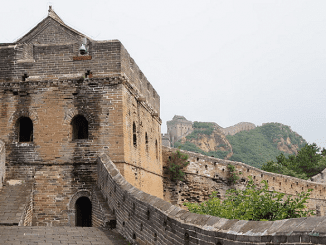In recent decades, technology has penetrated deeply into our lives and has had a significant impact on various fields, including art. From the emergence of digital media to the development of artificial intelligence and virtual reality, each new technological advancement opens up unique opportunities for artists and audiences to express themselves and perceive, as well as presenting new challenges.

Contemporary artists are increasingly using innovative tools to create works that not only reflect their personal vision, but also engage with audiences on a new level. In this article, we will look at how technology has changed traditional art forms, new genres have emerged and new ways of interacting with the audience have emerged. We will discuss examples of digital art, the role of artificial intelligence in the creation of works, the impact of virtual and augmented reality on the creative world, and how social media is shaping the contemporary art community.
Understanding these changes will help us better understand how technology continues to transform not only the process of art making, but also our perception of cultural heritage in the age of digitalisation.
Traditional methods of art making
The stages of technology's influence on art can be traced back to the entirety of humanity, changing the way art is created and distributed, as well as to a large extent the way it is perceived and, not least, interacted with by the consumer.
Painting and the artists who created it traditionally used pencils, charcoal, pastels, brushes, paints, and traditionally canvas or paper as the surface on which beauty was created.
Mankind used different ways of self-expression, it is impossible to avoid such techniques as engraving and printing. The methods of lithography, etching, silkscreening were used to create many copies of works of art, and also allowed artists to experiment, applying different textures and effects to their works.
A huge layer of art is the direction of sculpture. Works of marble, bronze, wood, clay, to which the methods of carving, casting and modelling were applied, were executed with such incredible reflection of detail that it is hard to believe that sculpture is the product of handwork.
Photography and film art are now the most popular examples of art. With the invention of photography, mankind has a new way of expressing themselves and using a variety of shooting and printing techniques to create incredible artwork. Film art in the early 20th century opened new horizons for artistic expression through movement and sound, making the full range of human emotions manifest.
In today’s digital age, platforms that blend creativity and innovation are thriving. For example, projects like wantedwin casino review exemplify how technology reshapes industries, providing fresh perspectives and unique interactive experiences that parallel the evolution of art through time.
Stages of modern art
Thus until the 1990s the technology of creating art was mainly based on traditional methods and materials.
The advent of personal computers and software (1980s-1990s) brought about a digital revolution in the field of graphics and animation making them accessible to a wide range of users.
With the spread of the internet during the period of internet creation and globalisation (1990s-2000s) artists began to share their work online, which led to the creation of new forms of audience interaction such as virtual galleries and platforms for sharing digital works.
Platforms and social media (2010s) changed the way artists showcase their work and interact with fans. This has led to a more democratised approach to art.
From the 2010s to the present day, the use of AI to create artwork has become a new trend. Algorithms can generate images, music, and even texts, challenging traditional notions of creativity.
Another current trend is virtual and augmented reality technologies that allow for immersive art experiences where viewers can interact with art in three dimensions, pushing the boundaries of perception.
Examples of digital art
Digital art encompasses a wide range of forms and styles. Here are a few examples:
Artists within digital art creation use graphics tablets and programmes such as Adobe Photoshop or Procreate to create original paintings. Examples include works by artists such as Kim Jong-gi and Claire Reid.
Programs such as Blender and Autodesk Maya, using 3D modelling allow you to create three dimensional models and animation. This is used in film, video games and virtual reality.
Virtual Reality (VR) artists create immersive experiences, allowing viewers to interact with art in virtual spaces. Projects such as Google's ‘Tilt Brush’ allow painting in 3D space.
Generative art using algorithms and coding to create unique works of art. Examples include works by artists such as Michael Hansmeier and Mark J. Stock.
Digital works of art or NFT art that are sold as non-fungible tokens (NFTs) on blockchain platforms. Well-known examples include works by Biplo and Christopher Tinn.
The use of digital technology to create and edit photographs more commonly referred to as digital photography is also a huge part of contemporary art. Contemporary photographers such as Eric Kim and Sally Mann use digital techniques to create their work.
Artificial intelligence in contemporary art
Artificial Intelligence (AI) is becoming an increasingly significant part of contemporary art, opening up new horizons for creativity and self-expression. In recent years, AI has not only changed the way artworks are created, but also the very nature of the interaction between artist and viewer. Let's take a look at a few key aspects of AI's impact on contemporary art.
One of the most notable applications of AI in art is the generation of images, music, and text. Machine learning algorithms such as neural networks can analyse huge amounts of data and create original works based on the styles of famous artists or music composers. Projects such as DALL-E and Artbreeder allow users to generate unique images by combining different elements and styles. AI is also actively used to create interactive installations where viewers become part of the artistic process. For example, some exhibitions use algorithms to analyse viewers' reactions and adapt artworks in real time. This creates a unique interaction experience where each viewer influences the outcome, making art more personalised and dynamic. Artificial intelligence offers artists new tools to express themselves. For example, AI can be used to create musical compositions or visual works that would be impossible to realise using traditional methods. This expands the boundaries of creativity and allows artists to experiment with new forms and concepts.
AI is also impacting the art market. More and more artists are using technology to create NFTs (non-fungible tokens), allowing them to sell digital works on blockchain platforms. This opens up new opportunities to monetise art and draws the attention of collectors to digital works.
The Merge is a unique digital art project by an artist with the pseudonym Pak. It is not only the world's most expensive NFT token, but also the most expensive artwork created by an artist who lives in our time.
Artificial intelligence is becoming an important tool in contemporary art, changing approaches to the creation, perception and commercialisation of artworks. It opens up new possibilities for creativity, posing unique challenges for artists and audiences. As technology continues to evolve, the future of AI-enabled art promises to be exciting and unpredictable.
How is social media shaping today's art community?
It's no secret that social media has become an integral part of our lives. And for artists and art enthusiasts, they have dramatically changed the way art is created, shared and perceived. Platforms such as Instagram, Pinterest, TikTok and Twitter have provided artists with unique opportunities to express themselves and interact with audiences, which in turn has shaped a new art community. Artists are no longer confined to traditional galleries or exhibitions; they can share their work with a global audience with just a few clicks. This has created a more democratic space where everyone can be seen and heard. New talent can quickly gain popularity and audiences are able to discover a variety of styles and trends.
Social media facilitates the formation of communities around art. Artists can interact with each other, share ideas and get feedback from their followers. Hashtags such as #artcommunity or #digitalart allow you to find like-minded people and participate in various projects and challenges. This creates a sense of belonging and maintains a creative atmosphere. Finally, social media becomes a platform for discussing and criticising art. Users can share their opinions on works, which creates a space for dialogue and analysis. This can be a positive or negative experience for artists, but either way it promotes critical thinking in the art community.
The methods of creating art are immense and multifaceted. Technologies do not stand still and develop every second and it is impossible to imagine what their interaction will lead to. However, one thing is certain, the influence of technology on art throughout the existence of mankind is enormous.



